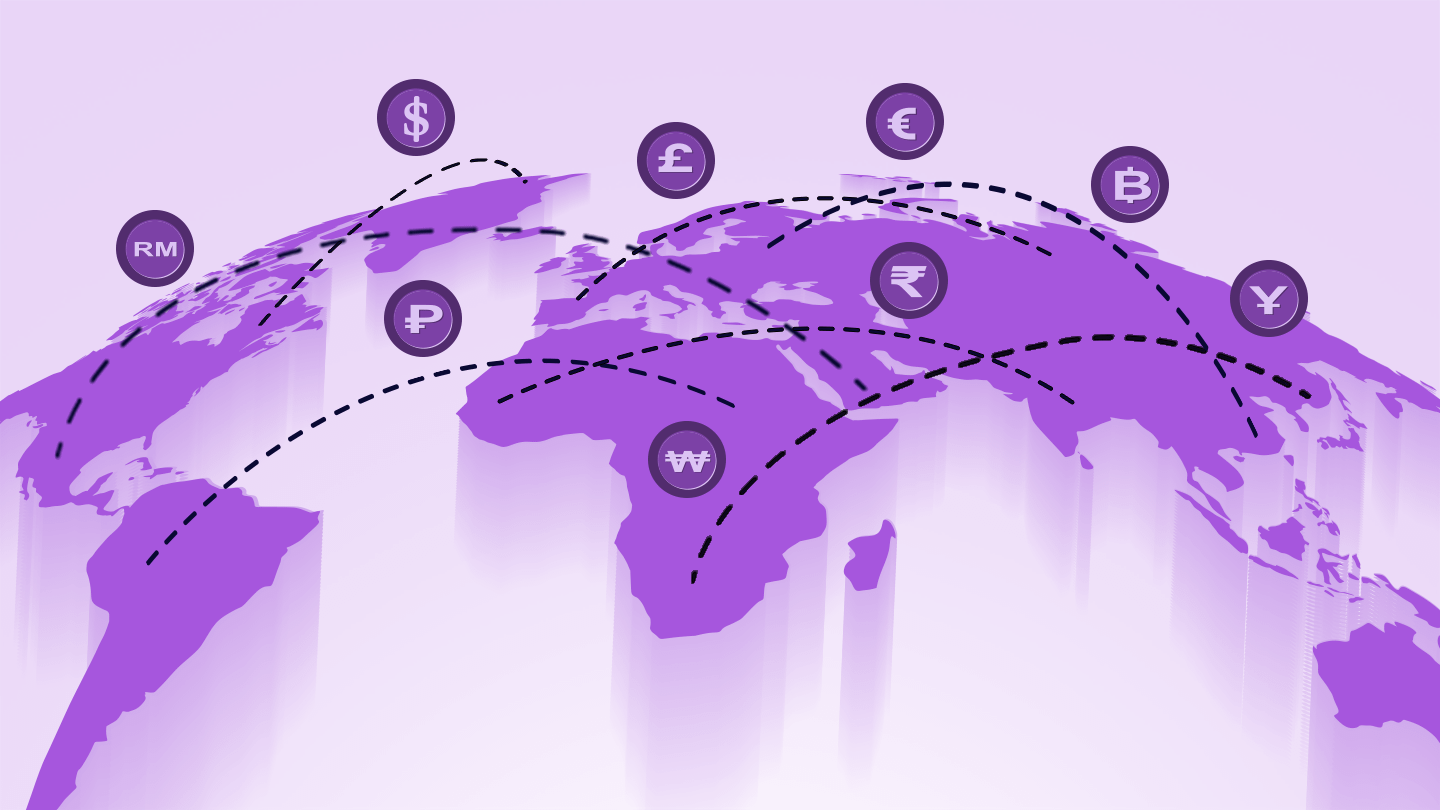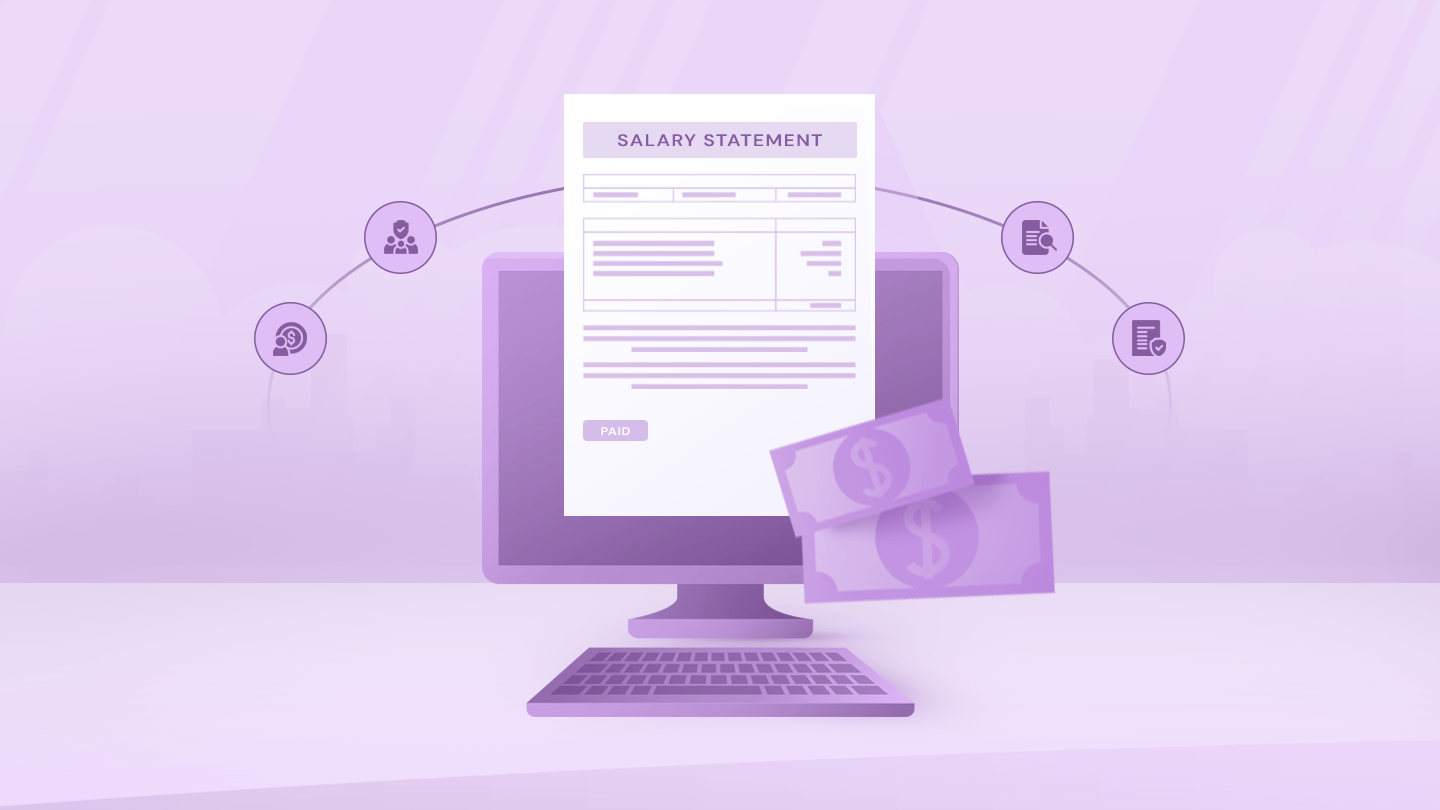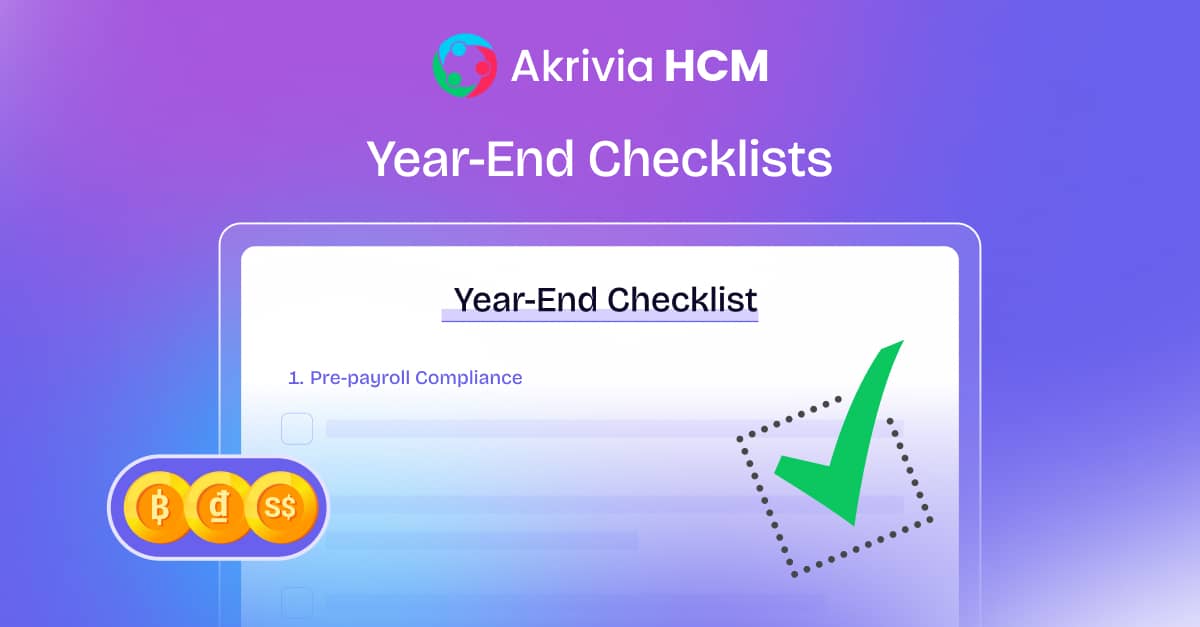Introduction
The business landscape has transformed dramatically considering the rise of remote work since 2020. From startups to multinationals, companies are looking for ways to build workforces that span the globe. In the next five years, according to a recent report by WEForum, roughly 70% of organizations intend to expand their global workforce. To gain access to a wide range of talent pools, many of the organizations believe that globalization of their workforces acts as a dominant factor. But with this unprecedented growth comes a myriad of challenges: one of them being – managing a Global Payroll System.
Understanding global payroll isn’t about paying checks on time; it’s about centralizing compensation management across diverse countries to boost operational efficiency. However, many of the organizations struggle with the nuances of labour laws, compliance, and taxation.
The Importance of Global Payroll Software
A Business Research Insights survey indicates, at a compound annual growth rate (CAGR) of 7.63%, the global payroll market, worth USD 5,435.88 million in 2021, is expected to exceed USD 12,201.57 million by 2032.
Global Payroll refers to managing employee compensation while conforming to each country’s local laws and regulations for a multinational workforce. A well-implemented global payroll system ensures timely and accurate payments, which is only a portion of the solution. It also improves payroll efficiency by automating business functions such as tax calculations and multi-jurisdiction compliance reporting.
Additionally, a centralized payroll system allows for greater visibility and significantly reduces the risk of costly penalties, leading to better overtime cost control. Now, let us dive into some of the challenges associated with Global Payroll Systems.
Challenges in Handling Global Payroll
Managing global payroll presents a unique set of challenges that companies must overcome as they aim to align their payroll practices with broader business objectives. In this section, we will look at some of the issues and how global economic conditions affect payroll procedures.
Pandemic Outbreak
During COVID-19, businesses worldwide faced sudden shifts in workforce management, and its repercussions are still being felt today. One business function which particularly have had a significant impact is payroll. This situation exposed the vulnerabilities of multinational companies, which adopted remote working practices almost overnight.
With employees working remotely, payroll teams struggled to ensure payroll continuity and make accurate payments. The team faced difficulties in accessing the necessary systems, tools, and data required to process payments in this transition. They had to resort to temporary solutions like basing payments on previous months’ values to ensure employees were paid on time.
Besides, international governments introduced new laws and regulations to help payroll teams through the global crisis. Although it was intended to be beneficial, it created an excessive workload for them to understand and adapt quickly to new challenges.
Non-Compliance
Failure to keep up with frequent regulatory changes might have a ripple effect, compromising the employer’s brand name and financial health. For instance, in the United Arab Emirates (UAE), non-compliance with the Wage Protection System (WPS) regarding misinformation in payroll practices can result in a fine between AED 5,000 to AED 50,000 for private companies. Likewise, GDPR penalties are structured in most of the conglomerates to enforce compliance with data protection regulations.
Complex Regulations
The regulatory landscape of multinational companies stems from the sheer diversity of labour compliance, tax rates, and employment standards. Moreover, Southeast Asian countries have complex payroll regulations due to regional disparities. This often results in additional administrative burdens having to seek local legal advice, which could become expensive and time-consuming. To illustrate:
- Singapore has a progressive tax system with relatively low rates
- Malaysia has specific contributions under the Employees Provident Fund (EPF)
- Thailand mandates specific provisions regarding probationary periods and severance pay
- Vietnam has strict regulations on employee rights and benefits, including maternity leave and overtime compensation
- Indonesia requires adherence to local regulations on employee classifications and benefits
Currency Fluctuations
In multi-currency scenarios, particularly when dealing with lumpsum amounts or multiple currencies at once, it can throw a wrench in your plans. Likewise, when converting foreign currencies to the company’s base currency, the budget allocated for payroll can become skewed. This unpredictability of currency volatility can be influenced by factors like economic conditions, political stability and market speculation.
A minor miscalculation in salaries or failing to adjust payments to fit new exchange rates may lead to non-compliance penalties. Additionally, if an adverse effect on employee payment deadlines occurs, it can lead to dissatisfaction and even attrition in a globally distributed workforce.
Security Breach
From hacking incidents to insider threats, breaches could detrimentally impact businesses of any size. The core intent for cybercriminals is the security breach of employee payroll records. Its sensitive nature places global payroll systems at heightened risk, as they contain employee information and financial data.
A security breach can lead to immediate financial losses and severely deteriorate the brand’s image. After a breach, organizations might have to face operational disruptions, leading to delayed payments and unhappy employees.
Relying on third-party vendors for payroll processing can expose all connected organizations to risk when the vendor system is exposed to a security breach. A notable example of a ransomware attack is Kronos in December 2021, which compromised thousands of employee data and also caused secondary data breaches even after the initial incidents.
Communication Barriers
Another overlooked challenge that could possibly slow down the payroll process is the language barrier. Coordinating payroll across different geographic zones complicates communication between employees. It can lead to misunderstandings when payroll-related documents are not available in local languages. Often, employees may find it difficult to understand their pay slips, benefits, and any changes to payroll practices. So, effective communication becomes essential here.
Cultural differences in an international environment add another layer of complexity. What is considered a direct response in one culture could be perceived as ambiguous in another. This lack of cultural understanding can result in confusion, affecting not just payroll but overall employee relations.
Global Payroll Solutions
Global payroll solutions for multinational organizations typically involve three main options: in-house payroll systems, local payroll providers and outsourcing using an Employer of Record (EOR). Each of these options has its own pros and cons, making them appropriate for a plenty of business demands.
In-house Payroll System
This involves an internal payroll department within the organization calculating gross to net, issuing payments, and simplifying reporting to all employees.
Pros:
- Control and customization: Organizations can take complete control of their in-house payroll and customize it to meet specific needs.
- Data privacy: Managing payroll data internally can minimize the risk of external breaches.
- Immediate access: Real-time access to payroll information allows for speedy resolution of difficulties.
Cons:
- Resource intensive: Requires specialized staff and investment in software, training, and ongoing compliance updates.
- Error risk: Lack of expertise in complex payroll regulations can lead to fines and non-compliance.
- Time-consuming: It can be labor-intensive detracting time and resources from other core business functions.
Ideal for:
Typically suited for mid-sized businesses with a strong HR team that has the knowledge and expertise to handle payroll internally.
Local Payroll Providers
They work with multiple in-country payroll vendors by offering payroll processing services to other businesses in order to extend their geographic reach.
Pros:
- Local expertise: Local providers have a deep understanding of regional laws and compliances which can avoid potential legal issues.
- Reduced administration: Outsourcing frees up your internal resources, allowing businesses to focus on strategic initiatives.
- Swift adaptation: They can easily adjust and provide flexibility in handling payroll laws or tax rates.
Cons:
- Limited control: Organizations may have less direct oversight over payroll processes.
- Cost variability: Expenses can vary widely based on the number of employees and complexity of services.
- Communication issues: Working with multiple local providers often leads to miscommunication across different regions.
Ideal for:
These are great fitst for medium-sized businesses that have operations across the globe but may not have the resources for an in-house payroll system.
Outsourcing using an EOR
In this case, a third-party payroll provider is hired through the Employer of Record (EOR). Basically, they process the payroll procedures on the hiring organization’s behalf.
Pros:
- Full compliance: EORs take full responsibility for compliance with local laws and taxes, reducing potential risks for businesses operating globally.
- Speed to market: They can scale up quickly and expand into new markets without needing to set up a local entity.
- Time savings: With an EOR, payroll management becomes seamless, allowing the payroll team to drive organizational success.
Cons:
- Higher costs: Especially for a large workforce, it may incur higher ongoing costs when compared to the other two payroll providers.
- Loss of control: The chances of being taken full control by EORs are high, making the employees feel more like external contractors.
- Data security risks: Access to sensitive employee information to third-party payroll providers raises security concerns.
Ideal for:
It is suitable for businesses with a dispersed workforce looking to enter new markets that require immediate compliance with limited resources in HR and payroll.
Key Components to Consider While Setting Up a Global Payroll
Setting up a global payroll system can feel like traversing a complex maze, especially when operating globally. It involves several essential components ensuring compliance, transparency, and scalability, as well as streamlining payroll operations by integrating data across multiple countries. Among them are a few considerations:
- Compliance with local regulations
In an international setting, the first thing for businesses is to make sure they stay compliant. Every region has its distinct tax obligations, labour regulations and compliance requirements. To handle this, partnering with a global payroll platform like Akrivia HCM minimizes the burden of payroll teams. Therefore, a solid understanding of local employment laws is necessary for a consistent and smooth payroll process. - Data protection laws
A global payroll system having robust security measures is non-negotiable. Payroll data becomes visible to employees when moving between various systems. So, it is important to follow certain data protection laws for each country they operate in. Safeguarding employee information during payroll not only protects employees but also builds trust and upholds the company as a responsible employer. - Currency exchange rates
Currency is subjected to fluctuations which can depend on factors including the economic climate and geopolitical concerns. These exchange rates pose several limitations for businesses that run a multi-country payroll system. Choosing the right payroll software can streamline these processes without much or any effort, saving time and preventing financial risks. - Employee satisfaction
When employees see that their hard work is recognized through prompt salary payments, it increases overall employee morale and productivity. A cloud-based payroll system allows for easy-to-access portals where employees can view their payroll information anytime, regarding deductions, employee benefits and compensations. Also, offering multiple payment options like payroll cards or digital wallets promotes flexibility to choose what works best for them. - Data centralization
One of the major challenges in managing the global payroll system is dealing with numerous spreadsheets or disparate systems. Centralizing your payroll data allows you to consolidate all employee information into a single, unified platform. With everything in one place, it is less prone to errors, enhancing operational efficiency and minimizing complexities associated with global payroll.
Automation in Global Payroll System
The benefits of automating global payroll are becoming more pronounced as the effects are multiplied in every payroll location. In order to streamline your international payroll processes, integrating global payroll with HCM systems harvests a number of privileges.
Integration of Global Payroll with HCM Systems
Integrating global payroll with HCM systems always demands a well-structured technique that covers all possible circumstances. By doing so, businesses can create a single source of information for payroll data. This integration expands global analytics and allows for real-time information to help businesses make well-informed choices.
The existence of an API (Application Programming Interface) is a crucial prerequisite for streamlining payroll processing. Furthermore, to enhance payroll systems, AI/ML plays an important part by automating complex calculations that reduces the need for manual input.
Why Akrivia HCM is the Preferred Software?
One of the primary reasons Akrivia HCM is favored by organizations is due to its comprehensive features and user-friendly interface. This all-in-one platform covers all aspects of human capital management, including global payroll. Its multi-currency support accommodates diverse employee needs and preferences. Automated payroll processing is efficient and hassle-free, ensuring a unified approach to the distributed workforce. With its broad range of payroll features and a focus on employee satisfaction, it offers flexibility and scalability, making it suitable for growing businesses internationally.






